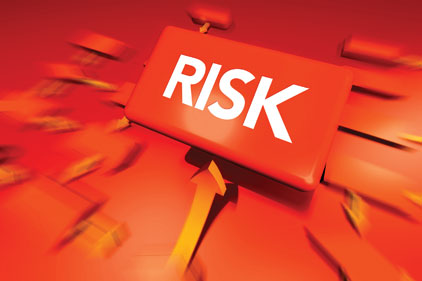Environmental Health and Safety Systems can automate this process of crisis management and are ideal in helping to ease the process.
Below are 7 reasons to incorporate an automated crisis management solution within your organization.
1. Centralized Location for all Documents: If you find yourself having to clean up during a crisis, the last thing you want to have to think about is where you kept certain processes and procedures. This process takes up time that you can spend lessening the impact.
An automated document control system provides you with a centralized location to store all documents related to specific crisis types. It stores contact information for those who are necessary to the process, procedures, and other information.
2. Guidance through a Workflow Process: Leveraging an automated workflow platform within an EHS system will guide you through each step of the process, ensuring that you don’t miss anything. You won’t have to worry about whom is responsible for each task or send out emails with assigned tasks. Rather than have to physically track down each person involved in the process, automated workflow will send a notification to that person to let them know what duties are assigned to them, check up on the person to make sure they are on track with their tasks, track them down again and escalate the notification if items are overdue, etc—the workflow will automate this process for you. Notifications of impending due dates, escalations, even delegation of tasks in case the person you need is out of the office. The last thing you need is to have to track down involved parties, during your process of crisis management.
3. Preparation with Crisis Management Drills: Conducting drills is an important aspect of crisis management. You want to not only have a plan in place, but you also want to verify that your plan is effective. The best way to ensure this is to do a mock scenario of your plan. Much like the fire drills we planned for in school, your organization needs its own “fire” drill. The crisis management system provides the ability to conduct regular drills on different types of crises, and even lets you grade your performance. Conducting these drills and learning from them is important to ensuring that if the real thing ever occurs, your organization is ready. Again, having a workflow-enable system will help you to ensure that the process is automated and runs according to your business processes. This way, you can fine-tune the process and make sure that you are able to efficiently and effectively manage a crisis in real-time.
4. Scalable Crisis Management Plan: Scalability is a big part of the EHS system. A scalable system can expand as needed in order to accommodate your organization’s future growth. This can be applied to crisis management as well. You will be able to scale your crisis management plan depending on the size of the event, how many departments are involved, how many locations, and so on. This will ensure that regardless of the crisis, you will never be caught off guard. The ability to put contingencies in place in case the crisis is larger than you expected is essential to a successful plan—don’t be caught off guard. One site may vary from the next, so it is important that a crisis management system within your EHS can adhere to a standardized process, but also have the ability to be unique to each site. Depending on the nature of the crisis, workflows may be adjusted by location, type of crisis and other factors. Having a system that can scale by location and by crisis type is important to effectively managing the overall process.
5. Training Integrated with Document Control: Processes and instructions are the crux of any crisis management plan. Some companies may have thousands of documents that they need to keep track of. Therefore, keeping them in a controlled environment is necessary to making sure they are all up to date. The EHS system’s document control process is made for this purpose. Document control links to the crisis management system, allowing you to link your emergency plans with any relevant documents within the system. On top of this, you need to make sure all of your employees are trained on all processes and procedures so in the event of an emergency, there is no learning period—everyone will have already been trained. Using the EHS you can integrate training with the crisis management plan to ensure that employees have been trained and are knowledgeable in their role, as well as manage and track the training status of all employees.
6. Simplified Change Management Process: Change is a common need all organizations share. When the need for change occurs, it is important to have the adequate workflow in place to ensure that any applicable stakeholders can review and approve these changes. Particularly when it comes to crisis management—you want to ensure that any changes are carefully thought out and have gone through the workflow to ensure that all parties are on the same page with the change and have signed off on it in the end. A dedicated workflow for the change process will allow your organization to foster continuous improvement and more readily prepare for change when the time comes.
7. Risk Management to Predict Potential Threats: When it comes to preparing for a crisis, you first need to identify the potential threats to your organization. How can you assess these threats in advance, based on operational areas and hazards, and build out crisis management plans for areas that might have risk? This is where risk management methods, such as bowtie risk, can help. Bowtie risk is an effective means of identifying and mitigating risk to increase safety and quality within your organization. Using bowtie risk, you can proactively assess risk within your organization and create plans based on historical risk data. This ability enables you to determine which areas of your organization are most likely to encounter a crisis situation, providing you with the insight to prepare in advance.
In addition to these seven points, you will also be left with the security of knowing that if or when a crisis strikes, you will not be caught off guard and will have the tools to contain it as quickly and painlessly as possible. While you can’t always predict the threats to your company, you can do the next best thing and be ready and able to ensure a quick recovery. Ask yourself—are you prepared in the event of a crisis?




